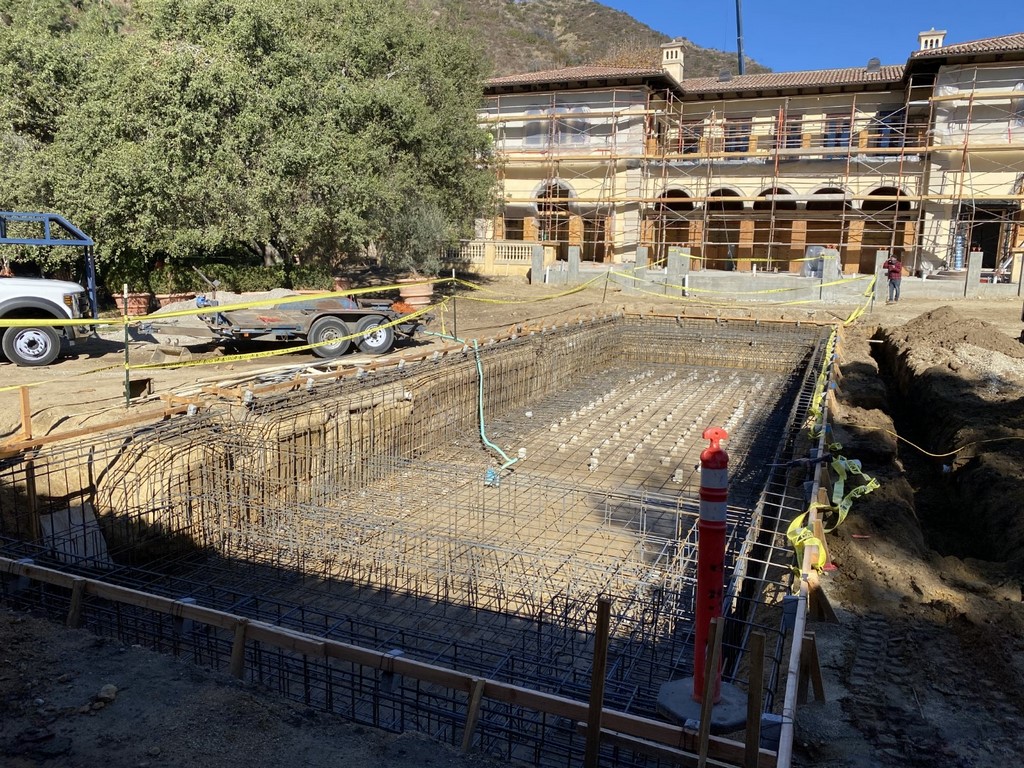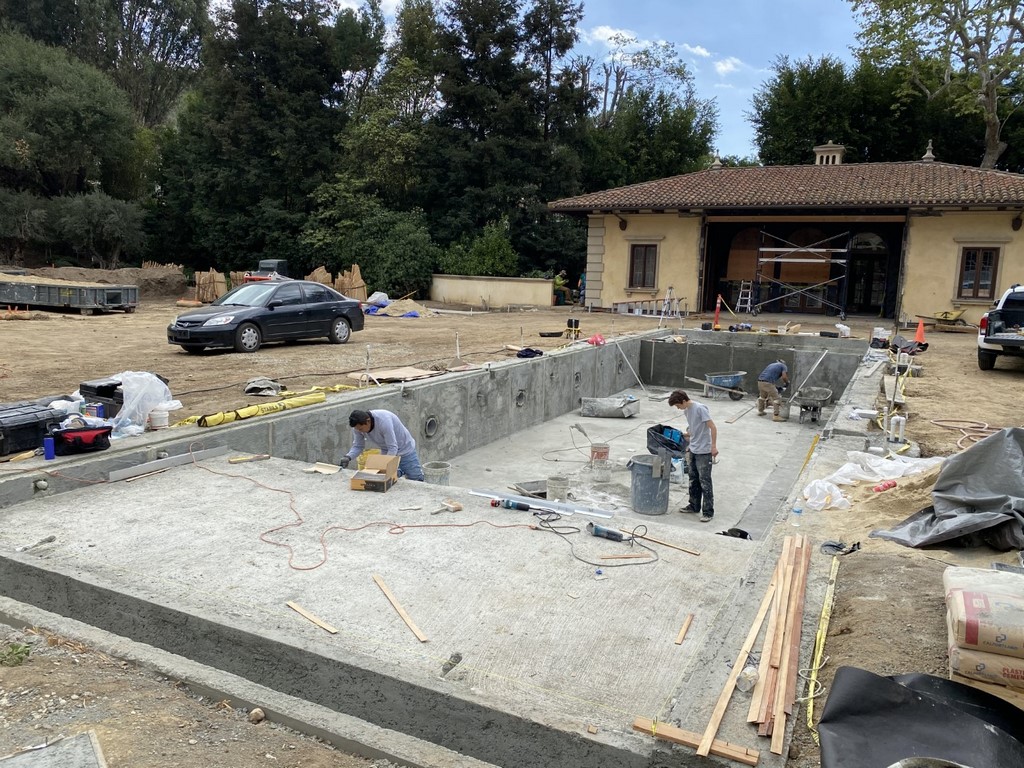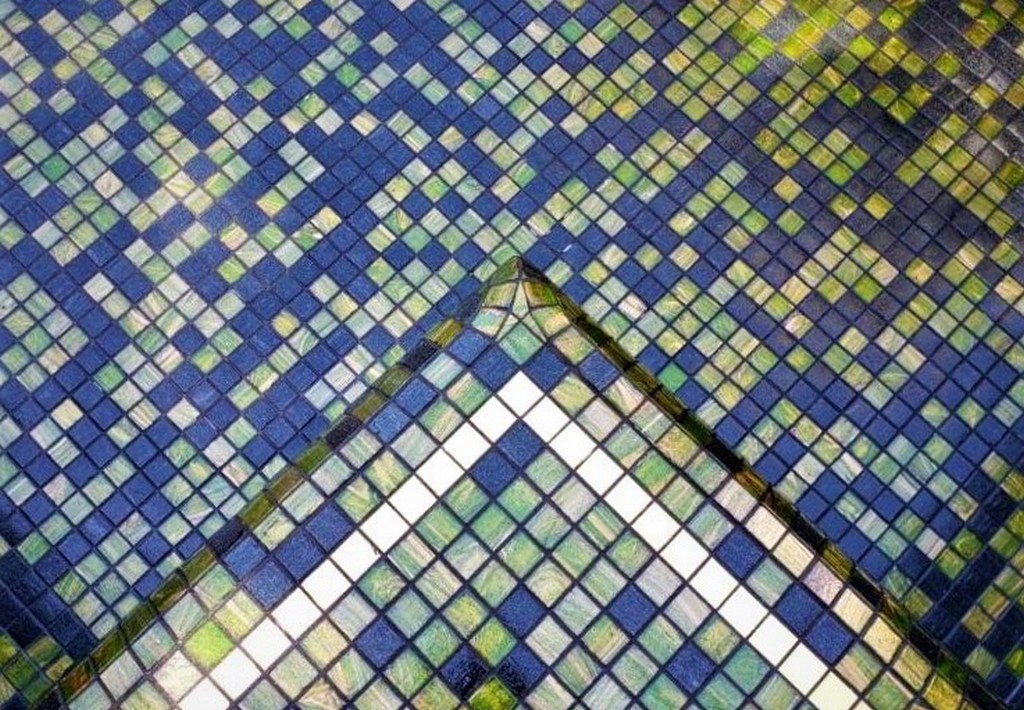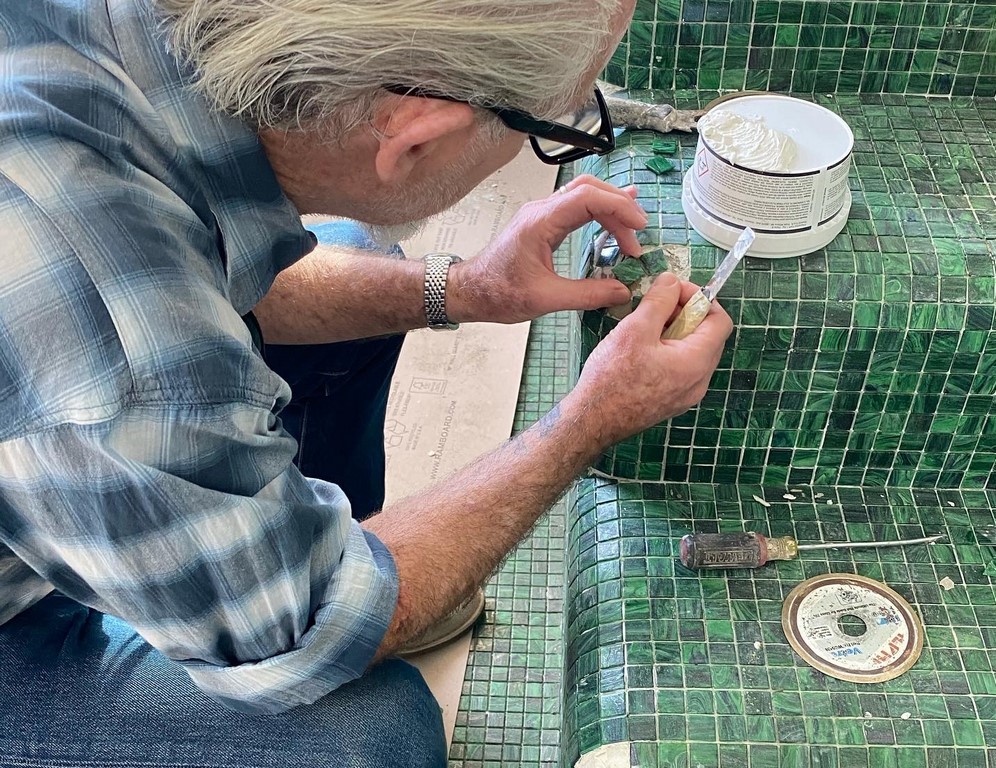

While the meaning of “art” has been pondered for millennia, many of those who pursue creating art believe the answer lies in the finest details, and the struggle needed to achieve them. Jimmy Reed argues the installation process itself is the true essence of artistry and the only way to make gemstones from tile and water.
By Jimmy Reed
I was recently inspired by something I heard legendary musician Frank Zappa say in an old interview. He was talking about his approach to playing guitar, and it struck me how what he said perfectly described my efforts as a tile installer and artist. I listened to it a number of times and decided to reappropriate Zappa’s words about musicianship into my own artist’s manifesto.
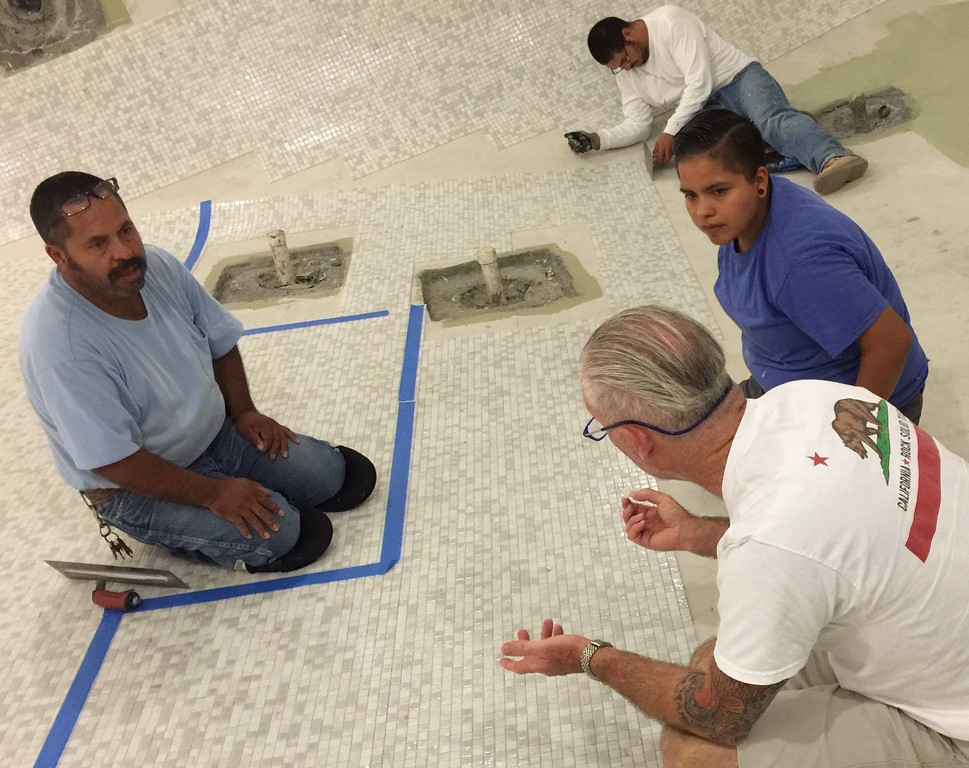
“I’m a specialist. What I do in a pool has very little to do with what other people do in a pool. I have a specific technical and mechanical knowledge that is necessary for a perfect and artistic installation, and, I have an imagination. Ultimately, it’s just me against the laws of nature, and with that I can do things that are literally impossible to imagine, sitting here. But you can see the results in my work.”
If that sounds a bit self-involved, guilty as charged. I wrote this, with Frank’s help, partly because I’ve become frustrated seeing the substandard way that so many others in the trade go about their business. I’m not typically prone to negativity, it’s not my nature; but, seeing careless, even deceitful work is, to my mind, a betrayal of the artistry of my chosen craft and it can be frustrating.
PORTRAYING A STANDARD
That betrayal manifests in projects where the tile finish fails with delamination, or comes up short aesthetically with poorly designed and installed tile finishes, and often both. Those insults are all the more aggravating when committed by contractors who proclaim themselves to be artists as a marketing message.
I believe it’s all at least partly the result of a pervasive superficiality that has overtaken how we portray our work. A specific example: all too often, these days we see fashion forward drone’s eye-view images of pools with colorful finishes and spectacular lighting on amazing looking properties. While I admire great photography and hold accomplished picture takers in high esteem, I think we can do even better in the way we visually capture our work.
Yes, from a distance, those settings can look beautiful and even dramatic, but they often don’t capture the essence of the space and the skill needed to create it. They don’t show the details or in any way reveal the intimate experience of being there or what it takes to get there.
Fact is, no one experiences their pool floating 50 feet in the air directly above it. No, the real art and craft of watershaping exists on a much deeper, more detailed and, I argue, meaningful level. It’s what you discover when you’re in the water or right next to it. It’s what you discover when you own it, and how all the fine details conspire to create an authentic personal and emotional experience.
Because tile is so visually and even tactilely compelling, and tends to overshadow other aesthetic elements, it’s a place where the problem I’m describing is most evident. But it’s also true of all other aspects of watershape design and construction. True artistry not only withstands close inspection and appreciation, it demands it and rewards it.
When I talk about the art of installation, I’m referring to the process of creation, and its potential. In a very real sense, artistry is only partly about the end result. I believe it’s even more so about the journey it takes to achieve a beautiful outcome. That’s the standard that sets artists apart from the crowd of wannabes. It’s why what I do is different from others.
I’m very proud of the fact that I come from an artistic family and my background includes being a professional musician. That life experience has taught me in countless different ways, that artistry is the result of personal investment in the creative process. It’s about elbow grease, discipline, persistence and determination.
Great art, whether it’s a piece of music, a painting or a watershape, requires sacrifice. It’s embodied in all the technical details, hours of practice and how the fine points ultimately serve the end result. Just like learning to tune your instrument or read music, many of the disciplines and techniques required to elevate watershaping to an art form go unseen and underappreciated, yet, they are always there and indispensable.
BELOW THE SURFACE
When you look at a beautiful tile surface, it’s easy to be captivated by the beauty and, I dare say, the charisma of the material. Tile is alluring, eternal and visually complex. When it’s combined with the ever-shifting optical field of water, it becomes a protean pageant of color, reflection and refraction.
That’s why people are willing to pay large sums of money for tile and its installation. It can be hypnotic and emotionally impactful. I certainly feel that way about it and get a powerful buzz when I see the finished product.
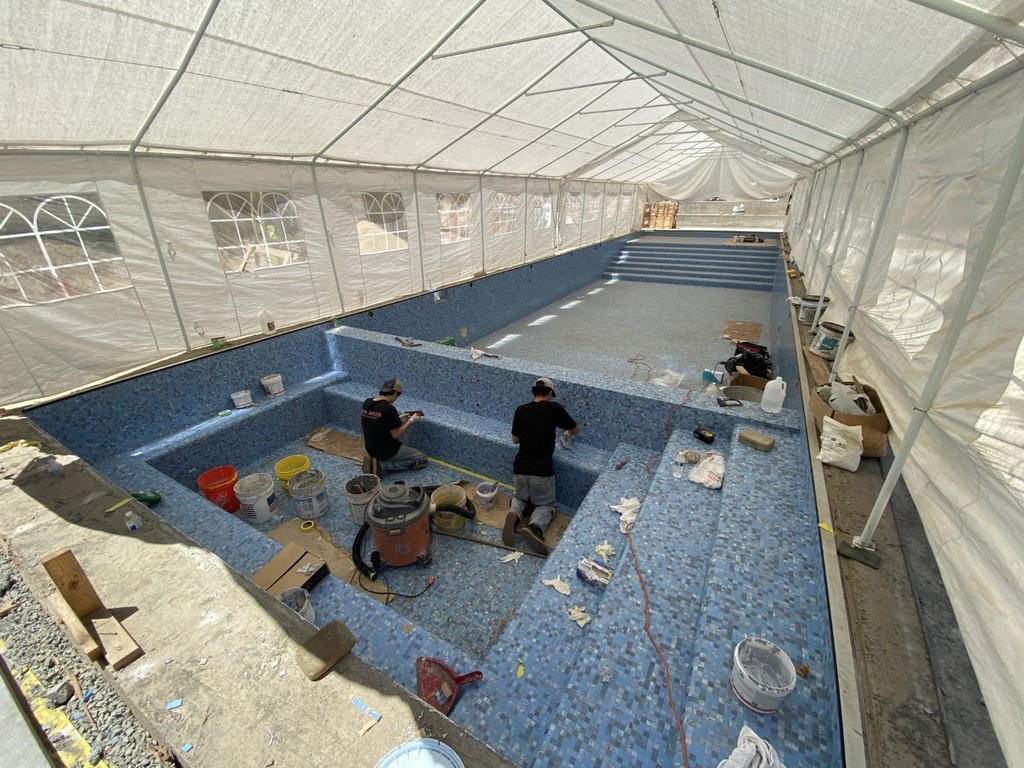
But there’s so much more to it than the immediate surface impression. In a very real way, every phase of construction down to the excavation itself conspires to create that dazzling presence. All the steps and all the trades are part of the artistic expression.
Yes, digging the hole is as much a part of the artform as selecting the tile or installing it to perfection. Great painters know how to stretch canvas and mix pigments, so, too the best watershaper understands the importance of digging in the dirt and tying steel.
It starts with the basic design and layout of the pool itself. The vessel’s contours and dimensions will be transmitted through every construction phase and ultimately drive minute matters of craft such as aligned grout lines and minimization of the cuts needed to make the tile fit. Something as basic as whether or not your have a curved or squared transition between the pool floor and walls can have a major impact on the tile finish and the way it’s designed and installed.
From the first sketched lines on paper through to filling the pool with water, all of the steps must fit together and support each other. The excavation establishes the rough dimensions that are then more precisely expressed in the steel and shotcrete. The plumbing, equipment selection and installation and electrical work support proper hydraulic, mechanical and chemical operation, all critical to the consumer experience.
Closer to the surface, the floated mortar material creates a precisely sculpted substrate for the tile. Again, it’s completely unseen, but arguably the most important part of the installation process, and where my crews and I spend a majority of our time.
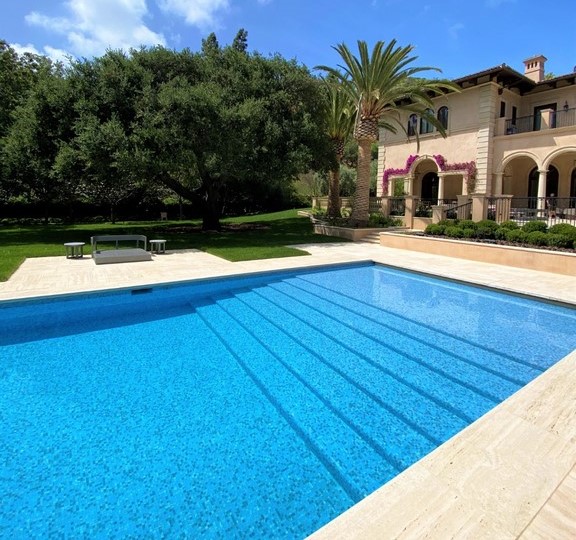
Finally, there’s the actual surface installation itself. Whether it’s traditional plaster, exposed aggregate, tile or a combination thereof, those final strokes can only take place when everything that goes before is done with care and precision.
DISCOVERING DETAILS
When you pay close attention to the finest details, every aspect of watershaping is part of the art. The result is that many of the details themselves are elevated to a point that they define the project, which is why I find over-produced photography and drone images so useless.
Many of the smallest visual details I use have become signatures. The way we handle edges and corners, for example, become like fine jewelry — drawing you closer, enhancing your appreciation and asking for your touch. We celebrate the design and geometric transitions with our fine cuts and precise placement and spacing. It takes time, skill and effort, but that energy and dedication results in little gemstones we leave behind, forever waiting to be discovered.
In the vast worlds of watershaping, landscaping and architecture, there are countless parallel examples. Perhaps it’s the arrangement of stone and plant materials along the edge of a stream, or the way specimen trees are lit, or the reflection of fire on the water’s surface, or the contour of frothing plumes in a fountain – all of them command our attention and admiration, and they are all the result of a multi-faceted set of skills and processes.
The art of installation is vast and diverse, yet, the very few of us who truly engage it are unified by the pursuit of excellence and expression. That’s what sets those of us who choose to see it that way apart from everyone else.
I truly believe Frank Zappa would agree.
Jimmy Reed is president of Rock Solid Tile, a tile design/installation firm based in Calabasas, Calif. He founded the company in 1985 after spending his teens and early 20s learning the tile-installation trade. In between, he attended Art Center College of Design (Pasadena, Calif.) and spent several years working in the entertainment industry.










